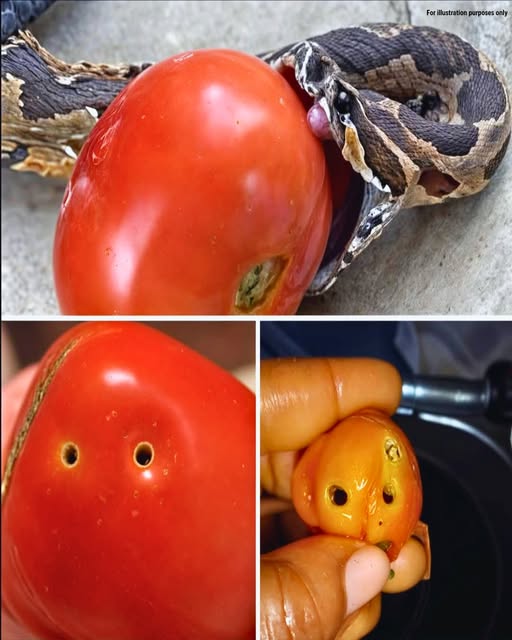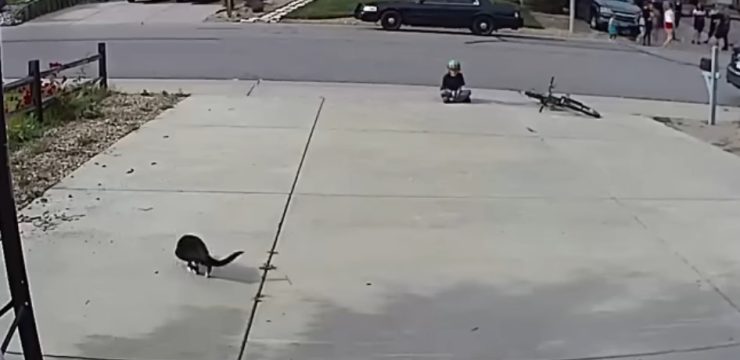Let’s be honest—nothing kills your gardening vibe faster than discovering a big, juicy tomato with a random hole in it. One moment, you’re thinking, “Yes, this one’s perfect for my salad,” and the next, you’re staring into a mysterious pit wondering what creature got there first. If you’ve ever grown tomatoes or just pulled one out of your grocery bag looking a little… off, you’re not alone. But don’t panic—holes in tomatoes aren’t rare, and in most cases, they’re not the end of the world.
So what actually causes these holes, and what do they mean for your tomato plants or your dinner plans? Let’s break it down and figure out what’s happening and what you can do to keep your tomatoes safe and delicious.

So, Why Are There Holes in Your Tomatoes?
First off, these holes didn’t just appear by magic. Something made them. And it usually comes down to one of these common issues:
1. Insects – The Usual Suspects
Bugs are by far the biggest culprits. We’re talking tomato fruitworms, hornworms, stink bugs, and beetles—basically your garden’s unwanted dinner guests. These pests bore or chew right through the tomato’s skin, sometimes leaving tiny pinholes, sometimes leaving a full-on crater. The tricky part is that the tomato might still look fine on the outside, but slice it open and… surprise! You might find some gnarly damage or even a lingering insect.
I once found a hornworm so fat and comfortable on my plant it looked like it had been paying rent. Not only had it munched the leaves, but it had gone straight for the tomatoes like it owned the place.
2. Birds and Squirrels – Cute, Until They’re Not
If the holes look more like random pecks or bites, your backyard wildlife might be the culprit. Birds love ripe, red tomatoes and often peck them looking for food or even just hydration—especially during hot, dry weather. Squirrels? Well, they’ll go big or go home, sometimes taking out half the tomato in one go.
If the damage is near the top and seems small and precise, it’s probably a bird. If it looks like someone scooped out a big chunk, your neighborhood squirrel might be to blame.
3. Physical or Environmental Damage
Sometimes, it’s not pests at all. Your tomato might be dealing with stress from irregular watering, extreme temperatures, or even genetic growth issues like blossom end rot or catfacing (yes, that’s a real gardening term). These can leave deep scars or holes in the fruit that look creepy but aren’t caused by critters.
If your tomatoes have strange shapes, craters, or deformities without any visible bite marks, this is probably what’s going on.
Can You Still Eat a Tomato with a Hole in It?
That depends. If the hole is small, the rest of the tomato looks fresh, and there are no signs of bugs or mold inside, you can totally salvage it. Just cut away the affected area and enjoy the rest.
However, if the hole is large, oozing, moldy, or just plain sketchy—trust your gut. Toss it out. I once tried to be brave and use a tomato with what looked like a tiny blemish. I cut into it and saw something moving. Safe to say I dropped it like it was radioactive.
How to Prevent Holes in Tomatoes (Because It’s Not Fun)
Now that you know what’s causing the damage, here’s how to stop it from happening again:
1. Check Your Plants Often
Even if you’re not the hover-over-your-garden type, take a few minutes each day to glance over your tomatoes. Look for chewed leaves, insect eggs under the foliage, or droppings. The sooner you catch the problem, the easier it is to deal with.
2. Water Consistently
Tomatoes hate surprises—especially when it comes to water. A sudden downpour after a dry week can cause the skin to crack, which makes the fruit more vulnerable to pests and disease. Keep a steady watering schedule to avoid splits and soft spots.
3. Use Mesh or Garden Netting
A simple way to deter birds and squirrels is to cover your plants with lightweight mesh or fabric. It’s easy to install and doesn’t hurt the animals—plus, it keeps your tomatoes looking flawless.
4. Try Companion Planting
Surround your tomatoes with herbs like basil or flowers like marigolds. Not only do they look great and smell even better, but they also naturally repel some of the pests that love tomatoes.
5. Keep Your Garden Clean
Pests love clutter. If you’ve got fallen fruit, old leaves, or thick weeds around your plants, clean it up. A tidy garden makes it much harder for bugs to settle in and start snacking.
What to Do When You Find a Hole
Here’s your action plan:
-
Inspect the tomato: Look for bugs, rot, or other signs of damage.
-
Slice it open: If it looks fresh inside, cut away the damaged area and use the rest.
-
If it’s questionable, throw it out: No salad is worth a side of worm.
-
Check nearby fruit: If one tomato has holes, others might too.
-
Take action: Use pest control, adjust your watering habits, or install mesh protection.
Finding a hole in your tomato can be gross, annoying, or even a little dramatic. But it’s also a chance to get more in tune with what’s going on in your garden. Whether it’s a bug invasion, a thirsty bird, or just some funky weather, once you know the signs, you can take action and protect your harvest. Because honestly? Tomatoes are picky, but they’re also totally worth the effort. And when you bite into a perfectly ripe one you grew yourself, it’s like winning the garden lottery.





